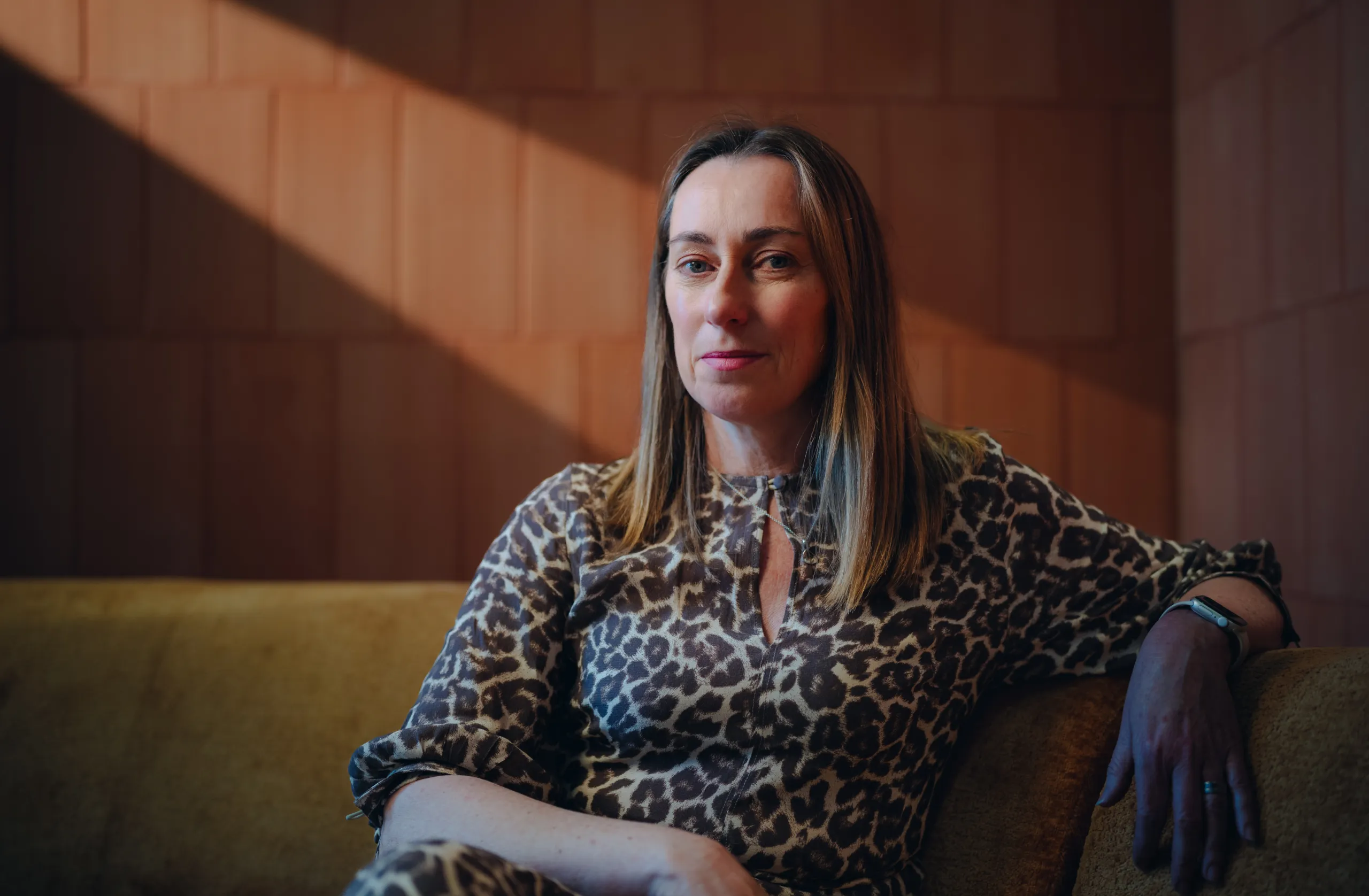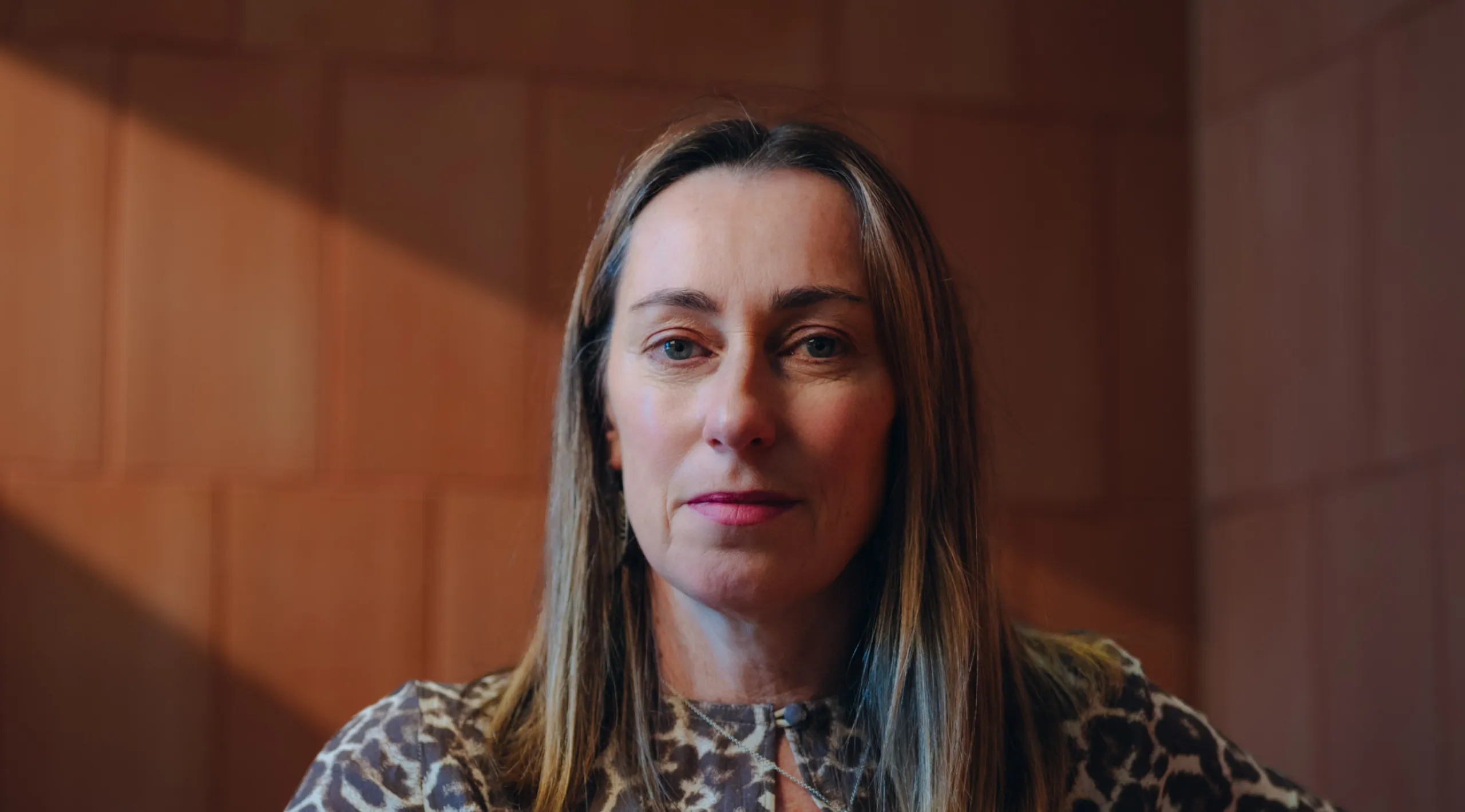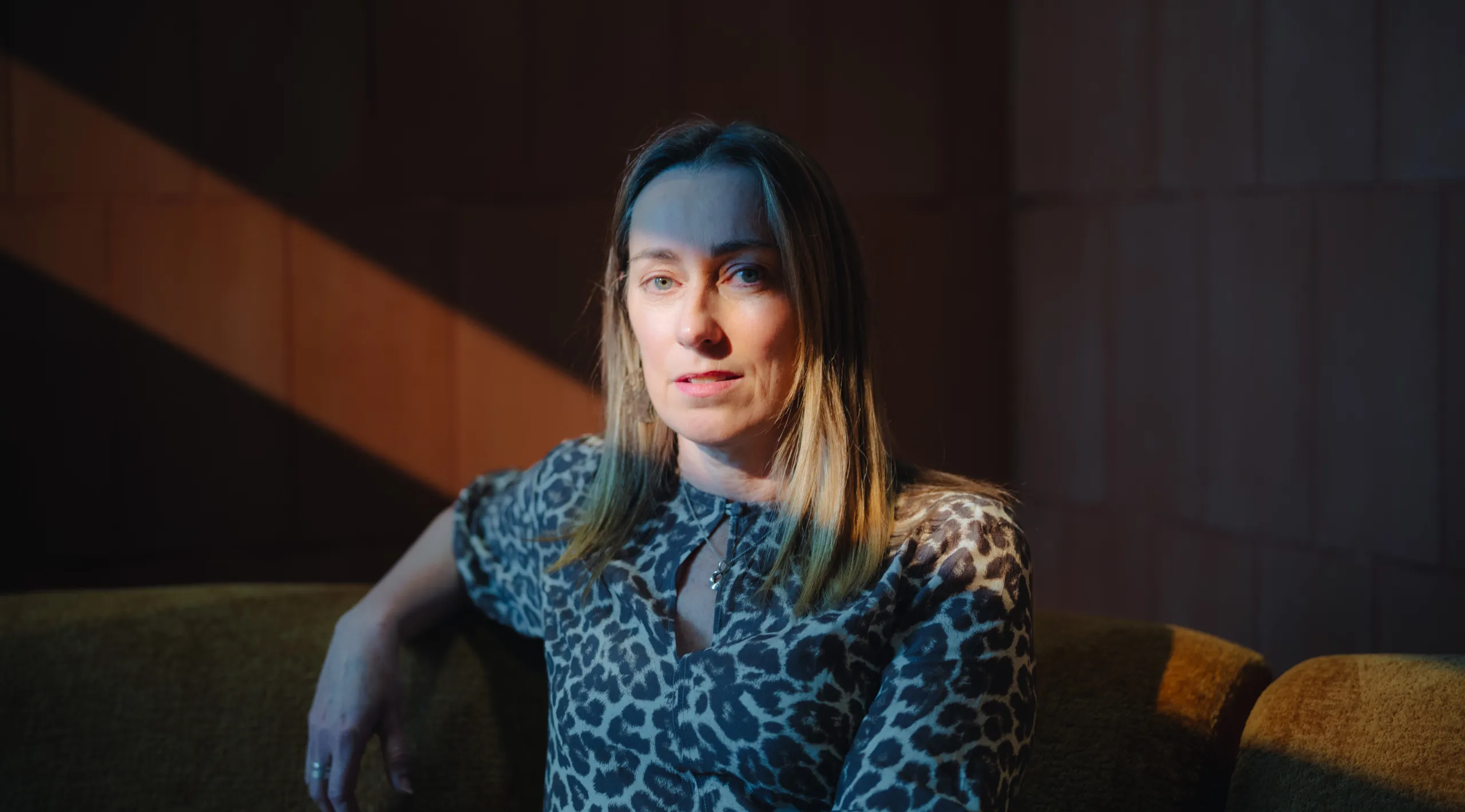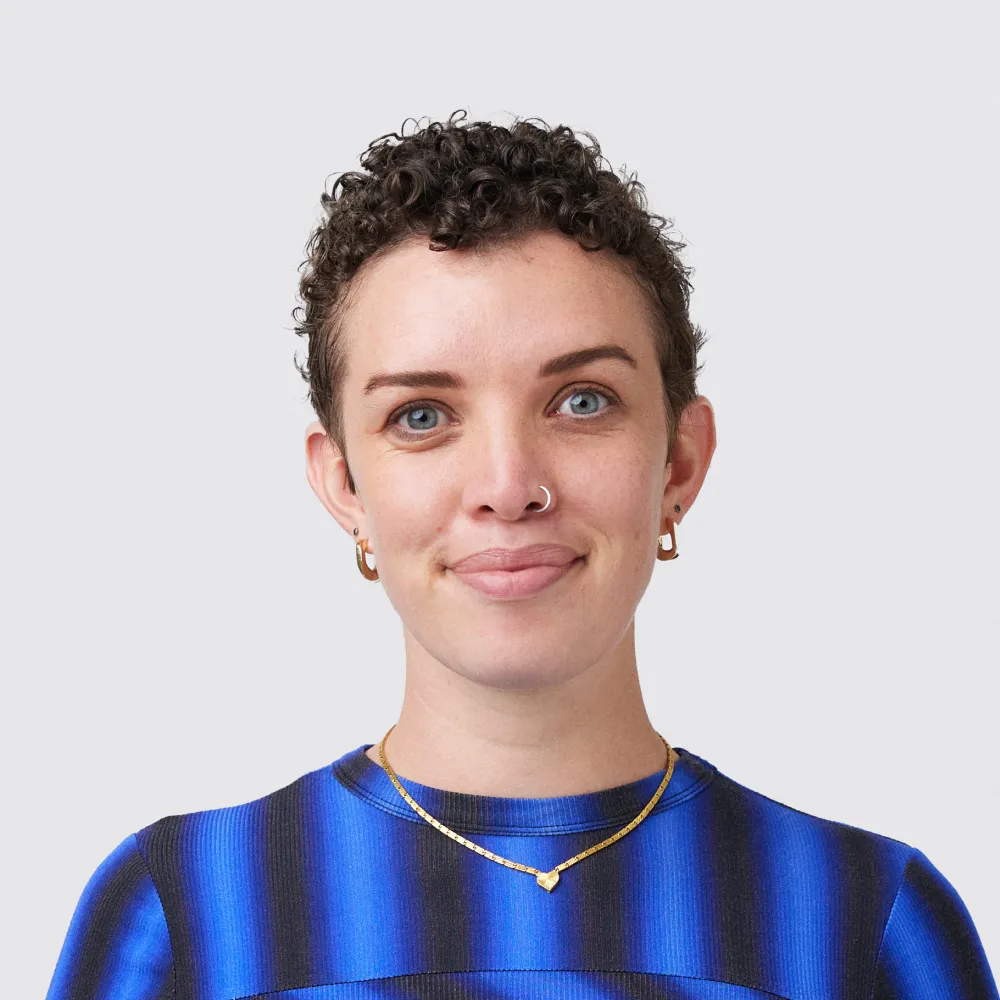Traditional funding models ask for guaranteed results.
But what if the most effective approaches to preventing violence against women haven't been tried yet?
Christine Gregory heads up the Our Watch Innovation Lab , which is backing community organisations to experiment, fail, learn, and discover what actually creates change. She shares why this matters—and how partnership will be the key to ending violence against women within a generation.
Christine Gregory, Head of Innovation Lab, Our Watch
Liz Sideris, Partnerships Lead, Today

When somebody asks you what you do, how do you answer that?
I head up a social innovation lab focused on preventing violence against women. It’s not really easy to explain to people, actually, but it’s a good conversation starter. They then usually ask what’s involved.
Our Watch are the national organisation for the prevention of violence against women, and I’ve worked there for nearly five years.
How did the innovation lab come to be?
We applied for some funding from Minderoo Foundation to establish this innovation lab, and we were successful, so it came out of an opportunity with Minderoo. We had pitched the idea of setting up an innovation lab, so we already had that in mind when we were talking to them about what we’d be able to do if we were successful.
What does innovation mean in the primary prevention space to you?
That’s what we’re trying to find out. We’ve got a vision of supporting community organisations working in different contexts who want to trial new approaches, or who have ideas they’ve thought about but haven’t had the resources to pilot or implement properly.
Our initial idea was that if we could support other organisations in testing and trialling different ways of doing prevention, we would learn what is effective. We know conceptually, and we also know from our work to date which mechanisms are effective, but it’s the how—how you do it and how you do it within different cohorts and communities—that we’re interested in. Finding what has the most impact, and once you know that, you can channel resources more effectively. So that’s what we’re trying to explore.
What’s the fire inside that drives you to do this work?
Most of my career has been in not-for-profits, but I spent around 20 years in international development before moving into this domestic space. A lot of that work was looking at the issue of gender-based violence as well. I’m driven to work for purpose organisations. I do believe that change is possible, or I wouldn’t be able to do this work. I’ve had a lot of people inspire me along the way, particularly through some of that international work. Activists who are working in places where that work actually puts them at risk—and we are not necessarily in that position here—we’re quite lucky. It’s easy to forget how lucky we are. It’s also easy to forget how far we’ve come, but there’s still a long way to go.
In terms of the fire to work in this space, a woman in Australia is killed on average every nine days by a current or former partner, and that has to change. The work to end violence against women is far from over, and that’s what drives me to keep doing it.
A woman in Australia is killed on average every nine days by a current or former partner, and that has to change. The work to end violence against women is far from over, and that’s what drives me to keep doing it.
Christine Gregory

Tell us about the innovation lab and how it came to be.
We had a vision of supporting organisations doing the work at the community level in different contexts. We’re only one organisation and we work nationally. So we can only do so much ourselves, and we were keen to support different organisations to try more risky ideas that perhaps they would struggle to get funding for from more traditional donors or governments that want to see things that have already been proven to be impactful.
We wanted to see what we could learn from these other organisations and from working in different places. We also have a firm commitment to supporting Aboriginal and Torres Strait Islander-led work, and that’s one stream of the lab’s work that’s currently being designed.
I noticed that Our Watch has also recently established a First Nations directorate, an Aboriginal and Torres Strait Islander Directorate. That’s quite new.
Yes, Regan Mitchel, a proud Aboriginal and Torres Strait Islander woman, was previously our head of Aboriginal and Torres Strait Islander strategy, and has stepped into the director position. The directorate drives Our Watch’s Aboriginal and Torres Strait Islander strategy and works across the organisation to ensure we deliver on those commitments. I think it’s an important step in demonstrating our commitment to this work, which has evolved over the years.
How will the innovation lab work? What is the impact of approaching violence prevention in this way?
What we hope to uncover are the key ingredients of prevention that are most effective and can scale up. If we know which ones are most effective, we can direct resourcing to the areas that will have the most significant impact, and we can advocate to the government to further the work. The impact of approaching violence prevention this way is the ability to be more flexible, agile, working in co-design, and having the opportunity to attract different types of organisations to our work as well. We’re just at the start, so it’s exciting.
It feels really important to move away from the rigidity of traditional funding pathways, because a lot of the work in the prevention space is government-funded, is that right?
Yes, largely, and we do receive funding through the national plan from the government, and hope to continue to. That’s an essential partnership. But working with a foundation like Minderoo provides a different level of flexibility. The government was very supportive of us working with them. The opportunity to experiment, to take a test-and-learn approach, is so valuable because behaviour change is complex, and different approaches work for different groups.

We’d love to hear more about how the lab was designed.
We were fortunate that Minderoo Foundation were willing and saw the value in investing in a design period. So we had time to sit in that problem space for a while, then go through the process of unpacking insights and narrowing in on which challenge we wanted to start with as our first one.
There are more challenges than we have available resources to address, but our first big challenge question is how to support men and boys to build respectful, positive, and gender-equal relationships, and how to encourage them to reject rigid stereotypes about what it means to be a man.
We ended up framing that as a challenge question and putting it out as an opportunity, which we’re calling the Building Connections Challenge, open to not-for-profit organisations working in this space, to tell us how they would address it. It’s an open challenge call. That’s where we’ve landed to begin with.
What a great opportunity for people to contribute to reducing violence. What is your dream opportunity for creating positive impact in the world?
The opportunity lies in working with others. Getting people involved in the lab would be great, from small initiatives to larger ones, so we hope to attract more partners to the lab.
Working in partnership is really important. We have to do this work together. We’re not in a position to be able to end gendered violence—which is the goal in the national plan—alone. There are many organisations already doing this work, and we hope to attract some partners who don’t see themselves as necessarily prevention actors but are coming from other sectors. The more investment and awareness of the problem, the more likely we are to achieve success.
I take a lot of inspiration from others who’ve already been working in this space for many, many years. I hope to see our lab succeed, and then more like it popping up around the country.
We need to go back to creating environments with positive connections between people. I think it's possible.
Christine Gregory
What do you think needs to change for that to happen?
I think lots of things need to change, but I prefer to think about what we’re aiming for, which is recognising that ending violence against women is everyone’s responsibility. It starts with respect within families and between communities, but it goes beyond that: there are structures and systems that don’t support people or communities to thrive, that need to change as well—structures that advantage some groups over others.
We need to end racism and we have to consider intersectionality at the heart of everything we do. We’re living in a world that’s somehow more connected yet fragmented at the same time. We need to go back to creating environments with positive connections between people.
I think it’s possible.
Partnership really is the key, isn’t it?
It is! We’d love to connect with people who aren’t necessarily just working in the prevention space, but who are doing social innovation more broadly. The first grant round is open for applications until 7 November, and I encourage everyone to watch this space because there will be more rounds in the future.
